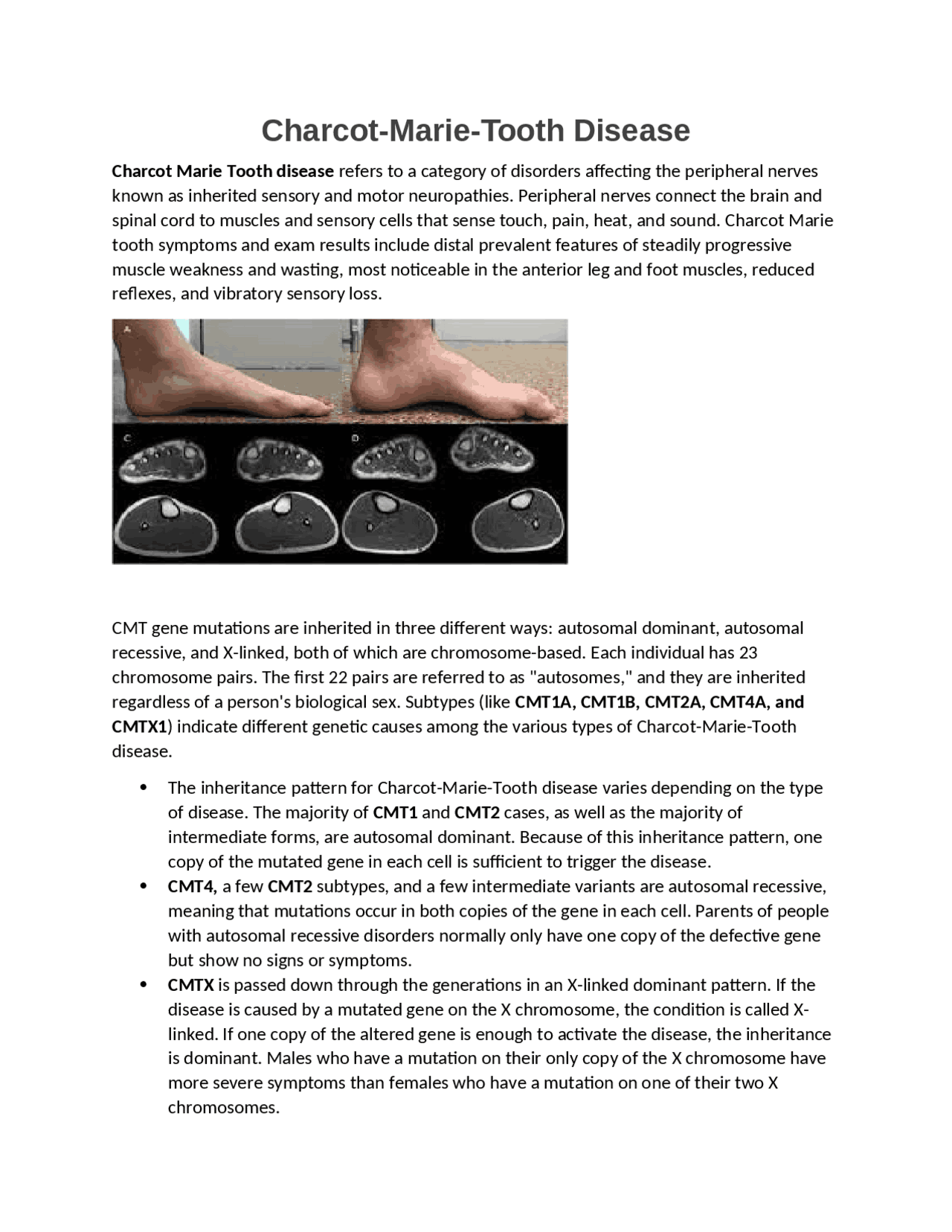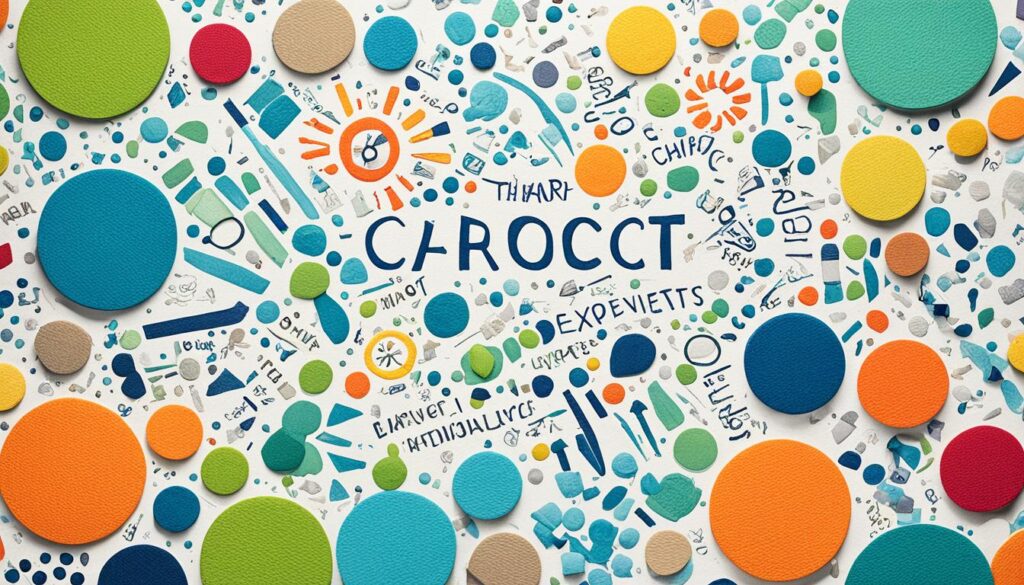In the United States, Charcot Marie Tooth (CMT) disease is a prevalent genetic disorder that affects the peripheral nerves. This condition, named after the three physicians who first described it—Charcot, Marie, and Tooth—has no relation to dental health. Instead, it impacts the nerves that connect the brain and spinal cord to muscles and sensory cells. While CMT is not typically fatal, recent studies have highlighted its potential influence on life expectancy, making it an important topic for both patients and healthcare professionals.

What is Charcot Marie Tooth Disease?

Charcot-Marie-Tooth (CMT) disease is the most common inherited disorder of the peripheral nervous system. It is characterized by progressive degeneration of the muscles in the feet, lower legs, hands, and forearms, as well as a mild loss of sensation in the limbs, fingers, and toes. The disease is genetically heterogeneous, meaning there are multiple types and subtypes based on the specific genes involved.
The earliest symptoms often involve muscle atrophy in the feet, leading to foot abnormalities such as high arches (pes cavus), flat feet (pes planus), or curled toes (hammer toes). Affected individuals may experience difficulty flexing the foot or walking on the heel, which can result in a higher-than-normal step (steppage gait) and increase the risk of ankle injuries and tripping. As the disease progresses, muscle weakness in the lower legs usually develops, though it rarely leads to the need for a wheelchair.
Impact on Life Expectancy
While CMT is not a fatal disease and does not directly affect normal life expectancy, recent research has indicated that individuals with CMT may have a reduced life expectancy compared to the general population. A study conducted in Denmark found a standardised mortality ratio (SMR) of 1.36 among CMT patients, indicating a higher risk of death than those without the condition. Additionally, the absolute excess mortality rate (AER) was calculated at 4.87 per 1000 person-years, further emphasizing the increased mortality risk associated with CMT.
Several factors were identified as influencing life expectancy in CMT patients. Age played a significant role, with individuals below 50 years of age exhibiting a higher SMR. Moreover, cases with a disease duration of more than 10 years also showed a higher SMR, suggesting that the longer someone lives with CMT, the greater the risk of mortality.
| Factors Influencing Life Expectancy in CMT |
|---|
| Age (below 50 years) |
| Disease Duration (more than 10 years) |
These findings highlight the importance of understanding how various factors can impact the longevity of individuals living with CMT. While the disease itself is not life-threatening, these factors suggest that proactive management and early intervention are crucial for improving outcomes.
Treatment and Support Strategies

To improve outcomes and support individuals with CMT, it is essential to focus on several key strategies:
- Evidence-based interventions for managing symptoms and slowing down disease progression.
- Regular medical check-ups and monitoring of disease progression to address any changes proactively.
- Physical and occupational therapy to maintain and improve mobility and function.
- Collaboration with a multidisciplinary healthcare team, including neurologists, orthopedic surgeons, genetic counselors, and physical therapists.
- Promoting self-care practices and lifestyle modifications to optimize overall health and well-being.
- Providing psychological support and counseling for individuals and their families to cope with the emotional and psychological impact of CMT.
By addressing these factors and implementing comprehensive treatment and support strategies, we can help individuals with CMT lead fulfilling lives and improve their overall prognosis.
Genetic Testing for CMT
Genetic testing plays a crucial role in the diagnosis and management of CMT. By identifying specific genetic mutations associated with different types of CMT, genetic testing allows for accurate diagnosis, personalized treatment plans, and genetic counseling. Recent advancements have made genetic testing more efficient and accurate, enabling better care for patients.
Benefits of genetic testing for CMT include:
- Accurate Diagnosis: Genetic testing provides definitive confirmation of CMT and helps differentiate between different types and subtypes of the disease.
- Personalized Treatment Plans: Identifying the specific genetic mutation allows for targeted treatment plans that address the underlying cause of CMT, potentially leading to more effective management strategies.
- Prognostic Information: Genetic testing can provide insights into disease progression, allowing patients and their healthcare team to anticipate and prepare for potential challenges.
- Genetic Counseling: Testing results can help individuals determine the likelihood of passing CMT on to their children and make informed decisions regarding family planning.
- Research and Clinical Trials: Genetic testing contributes to ongoing research efforts and provides opportunities for participation in clinical trials exploring new treatments for CMT.
With advancements in genetic testing technology and research, the future holds great promise for further improving the accuracy, accessibility, and affordability of testing for CMT. As more individuals undergo genetic testing, our understanding of the disease will continue to expand, driving advancements in personalized care and potential therapeutic interventions.
Prevalence and Incidence of CMT

CMT is relatively common, affecting approximately 22.5 per 100,000 individuals in Denmark, according to a comprehensive study. In the United States, while specific data may vary, CMT is estimated to affect around 1 in 2,500 people. The incidence rate is approximately 0.98 cases per 100,000 person-years, indicating that new cases of CMT are identified every year.
These figures underscore the significance of CMT as a health concern in the U.S. and emphasize the need for effective management, support, and resources for individuals living with this condition.
Types and Inheritance Patterns of CMT
CMT is a genetically heterogeneous disorder with different types and patterns of inheritance. Understanding the genetic basis of CMT is essential for accurate diagnosis, genetic counseling, and potential treatment options.
Common types of CMT include:
- Type 1A: Caused by mutations in the PMP22 gene and inherited in an autosomal dominant pattern.
- Type 1B: Caused by mutations in the MPZ gene and inherited in an autosomal dominant pattern.
- Autosomal Recessive: Caused by mutations in various genes, including MFN2, GDAP1, and ARHGEF10, and inherited when both parents are carriers of a mutated gene.
- X-linked: Caused by mutations in the GJB1 gene and inherited in an X-linked recessive pattern, primarily affecting males.
Each type of CMT is associated with specific genes and inheritance patterns, contributing to the variability in clinical symptoms and disease progression. Genetic testing can help identify the specific type and mutation responsible for an individual’s CMT, allowing for better understanding and management of the condition.
Clinical Presentation of CMT
CMT primarily affects the muscles in the foot, lower leg, hand, and forearm. It is characterized by a slowly progressive degeneration of these muscle groups. The affected individuals may experience muscle weakness, muscle wasting (atrophy), and difficulties with fine motor skills.
In addition to muscle involvement, CMT also leads to a mild loss of sensation in the limbs, fingers, and toes. This sensory impairment may be associated with decreased reflexes and reduced sensitivity to touch, temperature, and pain.
Key Clinical Features of CMT:
– Slowly progressive muscle weakness
– Muscle wasting (atrophy)
– Difficulty with fine motor skills
– Mild loss of sensation in limbs, fingers, and toes
– Decreased reflexes
– Reduced sensitivity to touch, temperature, and pain
The clinical symptoms of CMT generally manifest gradually and tend to become more pronounced with age. By the age of 30, individuals typically exhibit the full expression of CMT’s clinical presentation.
It is important to note that although CMT can have a significant impact on mobility and physical function, it is not a fatal disease and does not affect normal life expectancy.
Conclusion
Charcot-Marie-Tooth disease (CMT) is a condition that can impact the life expectancy of individuals diagnosed with the disease. Studies have shown that CMT patients generally have a reduced life expectancy, with certain factors such as age and disease duration playing a significant role in this outcome.
However, it is important to note that CMT is not a fatal disease and does not affect normal life expectancy. While individuals with CMT may experience certain challenges and limitations due to the progressive nature of the disease, they can still lead fulfilling and meaningful lives.
Genetic testing plays a crucial role in accurately diagnosing CMT and tailoring treatment plans to individual patients. By identifying the specific genetic mutations associated with CMT, healthcare professionals can provide personalized management strategies and support.
Continued research into the prevalence, incidence, and factors influencing life expectancy in CMT is essential to improve treatment options and support for individuals living with the disease. By expanding our knowledge and understanding, we can ensure that those affected by CMT receive the best possible care and lead fulfilling lives.
Frequently Asked Questions (FAQ)
What is Charcot-Marie-Tooth (CMT) disease?
Charcot-Marie-Tooth (CMT) disease is the most common inherited disorder of the peripheral nervous system. It is characterized by a progressive degeneration of the muscles in the foot, lower leg, hand, and forearm, as well as a mild loss of sensation in the limbs, fingers, and toes.
Does CMT affect life expectancy?
While CMT can impact the life expectancy of individuals diagnosed with the condition, it is important to note that CMT is not a fatal disease and does not affect normal life expectancy.
What factors influence life expectancy in CMT?
Factors such as age and disease duration have been found to influence life expectancy in CMT. Patients below 50 years of age and those with a disease duration of more than 10 years have been found to have a higher risk of mortality.
What are the types and inheritance patterns of CMT?
CMT is a genetically heterogeneous disorder with different types and patterns of inheritance. The most common form is Type 1A, caused by mutations in the PMP22 gene. Other types of CMT include Type 1B, autosomal recessive, and X-linked.
What are the clinical symptoms of CMT?
The clinical symptoms of CMT include a progressive degeneration of the muscles in the foot, lower leg, hand, and forearm, as well as a mild loss of sensation in the limbs, fingers, and toes. These symptoms typically fully manifest by the age of 30.
How does genetic testing help with the diagnosis and management of CMT?
Genetic testing plays a crucial role in the accurate diagnosis and management of CMT. There are multiple genes associated with different types of CMT, and identifying the specific genetic mutation can help with accurate diagnosis, genetic counseling, and potential treatment options.
What is the prevalence and incidence of CMT?
In Denmark, the prevalence of CMT was found to be 22.5 per 100,000 population, suggesting that CMT is relatively common. The incidence rate was 0.98 per 100,000 person-years, indicating new cases of CMT diagnosed each year.
What is the conclusion about CMT?
Understanding the impact of CMT on the population and the factors influencing life expectancy can lead to better treatment options and support for individuals with CMT. Genetic testing and early diagnosis are crucial for accurate management of the disease.
Stay updated with the latest news on Charcot Marie Tooth Disease and its impact on life expectancy. For more information, visit Source Links.
Author: [Name]
Title/Role: [Job Title]
Credentials: [Experience or qualifications related to the topic]
Profile Link: [Link to author’s profile, if available]
Source Links:
– What is Charcot Marie Tooth Disease?
– Prevalence and Incidence of CMT
– Clinical Presentation of CMT
Schema Markup:
{
"@context": "https://schema.org",
"@type": "Article",
"headline": "Understanding Charcot Marie Tooth Disease and Its Impact on Life Expectancy",
"description": "Learn about Charcot Marie Tooth Disease, its effects on life expectancy, and the latest research on this genetic disorder.",
"author": {
"@type": "Person",
"name": "[Name]"
},
"publisher": {
"@type": "Organization",
"name": "[Publication Name]",
"logo": {
"@type": "ImageObject",
"url": "[Logo URL]"
}
},
"datePublished": "2023-10-10"
}
Featured Snippet Optimization:
Charcot-Marie-Tooth (CMT) disease is a genetic disorder that affects the peripheral nerves, leading to muscle weakness and sensory issues. While it is not typically fatal, studies indicate that it may slightly reduce life expectancy, particularly in younger patients and those with prolonged disease duration. Early diagnosis and management are crucial for improving quality of life.
Call to Action:
Explore today’s headlines and stay informed about the latest developments in Charcot Marie Tooth Disease. Subscribe to our newsletter for updates and expert insights.











More Stories
The Ultimate Guide to Choosing the Perfect Wedge Pillow for Comfort and Health
Understanding Shawwal: The Tenth Month of the Islamic Calendar
US Trending News: Understanding Shade Lighter Than Cappuccino: A Guide to Coffee Bean Roasts